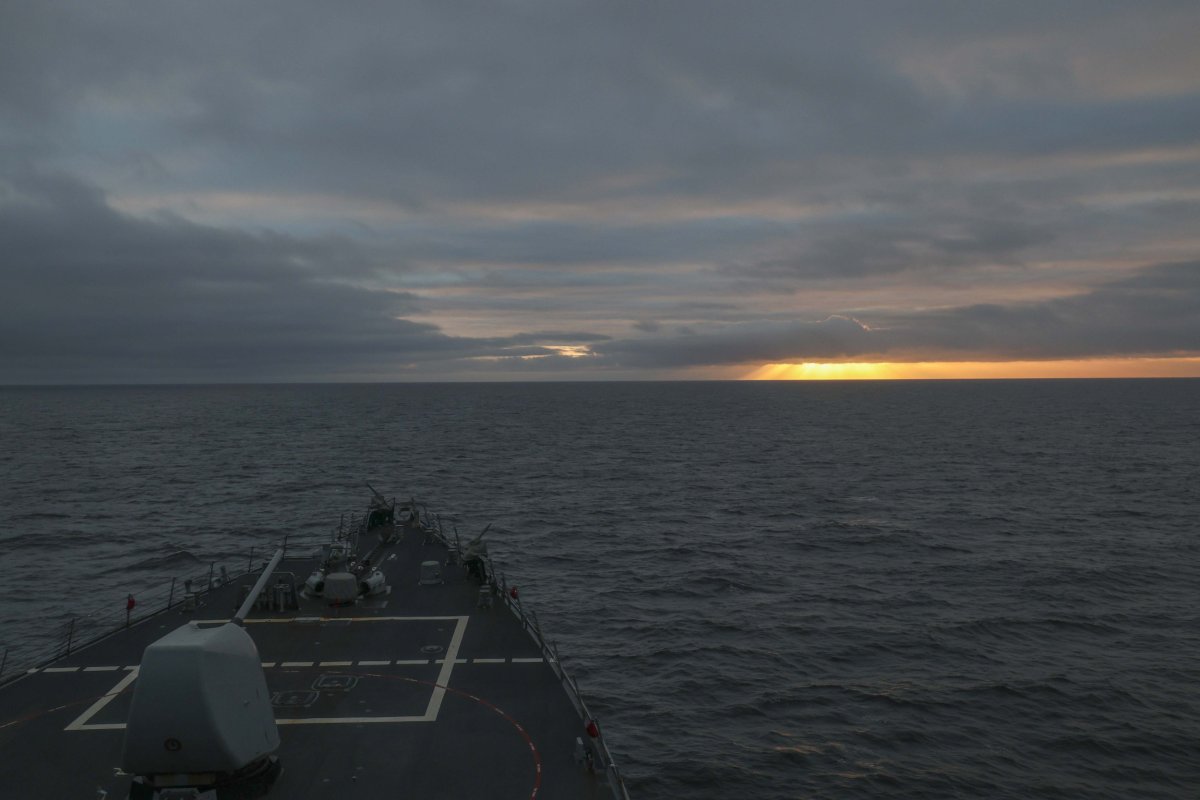Two American destroyers, armed with missiles, were sent by an aircraft carrier group to the Barents Sea on Monday, conducting maritime operations on Russia's Arctic doorstep.
The United States destroyers, USS Jason Dunham and USS Stout, are part of the Harry S. Truman Carrier Strike Group, the U.S. Sixth Fleet announced on Wednesday. They were underway in international waters in the Barents Sea for routine maritime operations.
The Sixth Fleet is one of the numbered fleets in the U.S. Navy and operates under the U.S. Naval Forces Europe-Africa, which has a vast area of responsibility covering all of Russia and Europe, including the Arctic Ocean, as well as nearly the entire continent of Africa.
The Barents Sea is a marginal sea of the Arctic Ocean, located off the northern coasts of Norway and Russia. It also falls in the Northern Fleet's area of responsibility, a naval unit of the Russian military in the Arctic region, where the fleet regularly conducts exercises.
"Our ability to conduct sustained operations in the challenging Arctic region is critical to maintaining an enhanced global presence," said Rear Admiral Sean Bailey, commander of the carrier strike group, which commenced its deployment in Europe on September 23.
By sending the Jason Dunham and the Stout to the Barents Sea, this will build the U.S. Navy's situational awareness in the austere Arctic environment, as well as "underscore our commitment to preserving a free and open Arctic," the American commander added.
The Pentagon in July announced an updated Arctic strategy, which called for increased military presence, intelligence capabilities and cooperation with U.S. allies amid Russia upgrading its military power in the region, as well as its growing cooperation with China.

Both American destroyers are multi-mission surface combatants, capable of conducting air defense, submarine hunting, antiship, and land-attack missions. Each of them is armed with a naval gun, 90 to 96 different types and ranges of missiles, as well as torpedoes.
The Barents Sea presented a great opportunity to reinforce warfighting readiness in the Arctic, said Commander Aaron Jefferson III, commanding officer of the Jason Dunham.
This was not the first time the U.S. deployed warships in the Barents Sea, where it had sent three destroyers in 2020 for operations with a British warship. The U.S. Navy said at the time it had notified the Russian Defense Ministry of the visit to avoid misperceptions.
The U.S. Sixth Fleet did not reveal whether it had provided a similar advance notice to the Russian military of the most recent deployment in the Barents Sea. "U.S. Navy operations in this region are in accordance with international law," said the fleet in the press release.

The American naval operations were carried out to enhance domain awareness, deter adversaries, and practice campaigning in the Arctic region, it added. Newsweek has contacted the U.S. Sixth Fleet and the Russian Defense Ministry for comment by email.
The destroyers' Arctic deployment came as NATO conducted a maritime strike exercise across Europe's waters, including the Mediterranean Sea, the Adriatic Sea, the North Sea, and the Baltic Sea. The Neptune Strike 24-2 began on Thursday until the end of October.
The exercise aimed at maintaining freedom of navigation in NATO's area of operations as well as securing strategic maritime chokepoints. It will also feature two American and British aircraft carriers in the North Sea, USS Harry S. Truman and HMS Prince of Wales.

On October 14, the Harry S. Truman and its warship escorts transited the Strait of Dover, which is the narrowest part of the English Channel and lies between Great Britain and mainland Europe, as they sailed northward from the Atlantic Ocean to the North Sea.
The armed forces of Norway said the American carrier strike group will train and exercise with them in the country's waters and nearby areas in October and November. The Prince of Wales will also take part in the training with the U.S. and Norwegian forces.




















 English (US) ·
English (US) ·